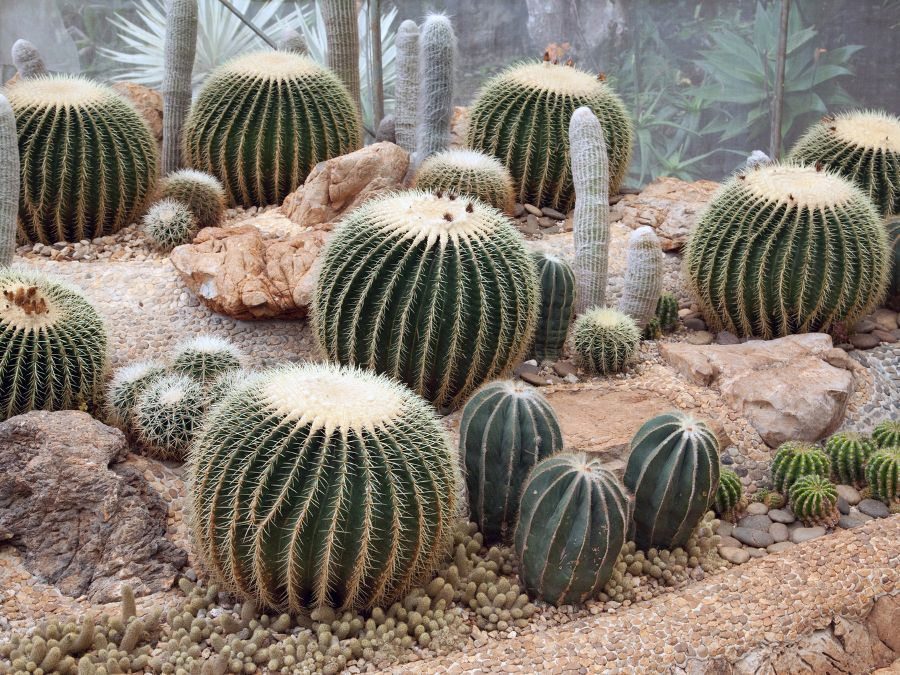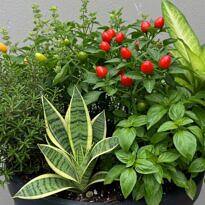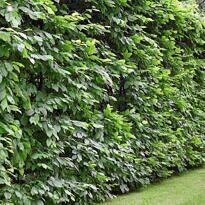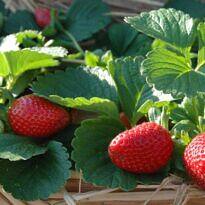Potting Mix Composition and Soil Improvement for Succulents: A Practical Guide for Cultivation
Succulents are fascinating plants that have become increasingly popular among gardening enthusiasts due to their exotic appearance, variety of shapes, and low maintenance requirements. However, for these plants to thrive, it’s essential to provide them with a suitable growing environment, including proper potting substrates and well-prepared soil in garden beds. In this article, we will explore the ideal composition of potting substrates and soil improvement for succulents, providing a practical guide for the successful cultivation of these plants.

Composition of Potting Substrates
Choosing the right substrate for growing succulents in pots is crucial to ensure the healthy growth of the plants. The optimal substrate composition should provide good drainage, adequate moisture retention, and sufficient nutrients to support succulent development. Here are some common components used in succulent substrate composition:
- Sand: Sand is an important component for improving substrate drainage. Coarse sand, such as construction sand or quartz sand, is recommended, typically in a proportion of 25% to 50% in the substrate mix.
- Perlite, Pumice, or Vermiculite: These materials help retain moisture without causing the substrate to become waterlogged. They also contribute to improved drainage. A proportion of 25% to 50% perlite, pumice, or vermiculite in the substrate mix is commonly used.
- Peat, Ground Charcoal, Carbonized Rice Husk, Composted Pine Bark, or Coco Coir: These organic materials assist in moisture retention and provide nutrients to succulents. They can be mixed in a proportion of 25% to 50%.
- Universal (or Standard) Potting Mix: To provide additional nutrients, a portion of good-quality universal potting mix can be added to the mix, typically in a proportion of 25% to 50%.
When preparing the substrate, it’s important to ensure a thorough mixture of the components, avoiding excessive compaction. Remember that proper drainage is crucial to prevent succulent root rot.
The pH of the substrate is also a critical factor for succulent growth. Most succulents prefer a slightly acidic to neutral pH, although some species thrive in alkaline substrates. Therefore, testing the substrate’s pH and adjusting it if necessary is recommended. This can be done by adding peat or powdered limestone to achieve the ideal pH.
Succulents are plants that generally do not require excessive fertilization. In fact, overuse of fertilizers can be detrimental to these delicate plants. Opt for a substrate containing a moderate amount of nutrients, avoiding heavy fertilizers like worm castings, manure, or common garden NPK fertilizers. This way, you’ll prevent the risk of damaging succulent roots with excessive fertilization.

Potting Substrate Composition: Succulent Substrate Recipes
Choosing the suitable substrate is essential for the healthy cultivation of succulents in pots. The correct substrate composition provides good drainage, appropriate moisture retention, and necessary nutrients for succulent development. Here are three substrate recipes that can be used as examples for cultivating succulents in pots:
Recipe 1: Draining Substrate
This recipe is ideal for succulents that require good water drainage and are adapted to drier environments.
Ingredients:
- 50% coarse sand
- 30% perlite or pumice
- 20% universal potting mix
Instructions:
1. Mix the coarse sand, perlite, and universal substrate in a large container.
2. Ensure the ingredients are well mixed, distributing the components evenly.
3. Avoid compacting the substrate during mixing.
4. The substrate is ready to be used for planting succulents in pots. Make sure the pot has proper drainage holes.
Recipe 2: Moisture-Retaining Substrate
This recipe is recommended for succulents that prefer a slightly more humid environment.
Ingredients:
- 40% coarse sand
- 30% perlite or pumice
- 20% coco coir
- 10% universal potting mix
Instruções:
- Combine the coarse sand, perlite, coco coir, and universal substrate in a large container.
- Mix the ingredients thoroughly until a homogeneous mixture is obtained.
- Ensure the substrate remains loose and well-aerated.
- This substrate provides good drainage while retaining an adequate amount of moisture for the succulents.

Recipe 3: Nutrient-Rich Substrate
This recipe is suitable for succulents that require a higher amount of nutrients for healthy growth.
Ingredients:
- 40% coarse sand
20% perlite or pumice
20% universal potting mix
10% peat
10% worm humus
Instructions:
- Mix the coarse sand, perlite, universal substrate, peat, and worm humus in a large container.
- Ensure the ingredients are well incorporated, creating a homogeneous mix.
- This substrate provides a nutritious base for succulents, allowing for healthy and vibrant growth.
Remember to adjust the ingredient proportions according to the specific needs of the succulents you are growing. These recipes serve as general guidelines, but it’s always recommended to observe the individual conditions of each plant and make adjustments as needed. With proper substrates, your succulents will thrive and enchant with their exotic beauty.
Soil Improvement for Succulent Garden Beds

If you’re planning to create a succulent garden bed in your yard, it’s important to prepare the soil properly to ensure a favorable growth environment for these plants. Here are some tips for soil improvement:
- Drainage: Succulents cannot tolerate waterlogged soil. Ensure that the garden bed soil has good drainage. You can enhance drainage by adding coarse sand or gravel to the existing soil.
- Aeration: Succulents benefit from well-aerated soil. This can be achieved by adding organic matter, such as compost, to the garden bed soil. The compost will help improve soil structure, making it looser and allowing better air circulation.
- Nutrients: While succulents don’t require extremely nutrient-rich soil, it’s important to provide them with an adequate supply. Add slow-release fertilizer or a fertilizer specifically designed for succulents to the soil before planting.
- Soil pH: Most succulents prefer slightly acidic to neutral soil. Check the soil pH and adjust it if needed with appropriate additives to meet the succulents’ requirements.
The successful cultivation of succulents relies on making the right choices regarding potting substrates and proper soil improvement in garden beds. The ideal potting substrate composition should provide good drainage, suitable moisture retention, and sufficient nutrients. For garden beds, drainage, aeration, nutrients, and soil pH are essential aspects to consider. By following these guidelines, you’ll create an environment conducive to the healthy and vibrant growth of your succulents, ensuring many years of enjoyment with these charming plants.






